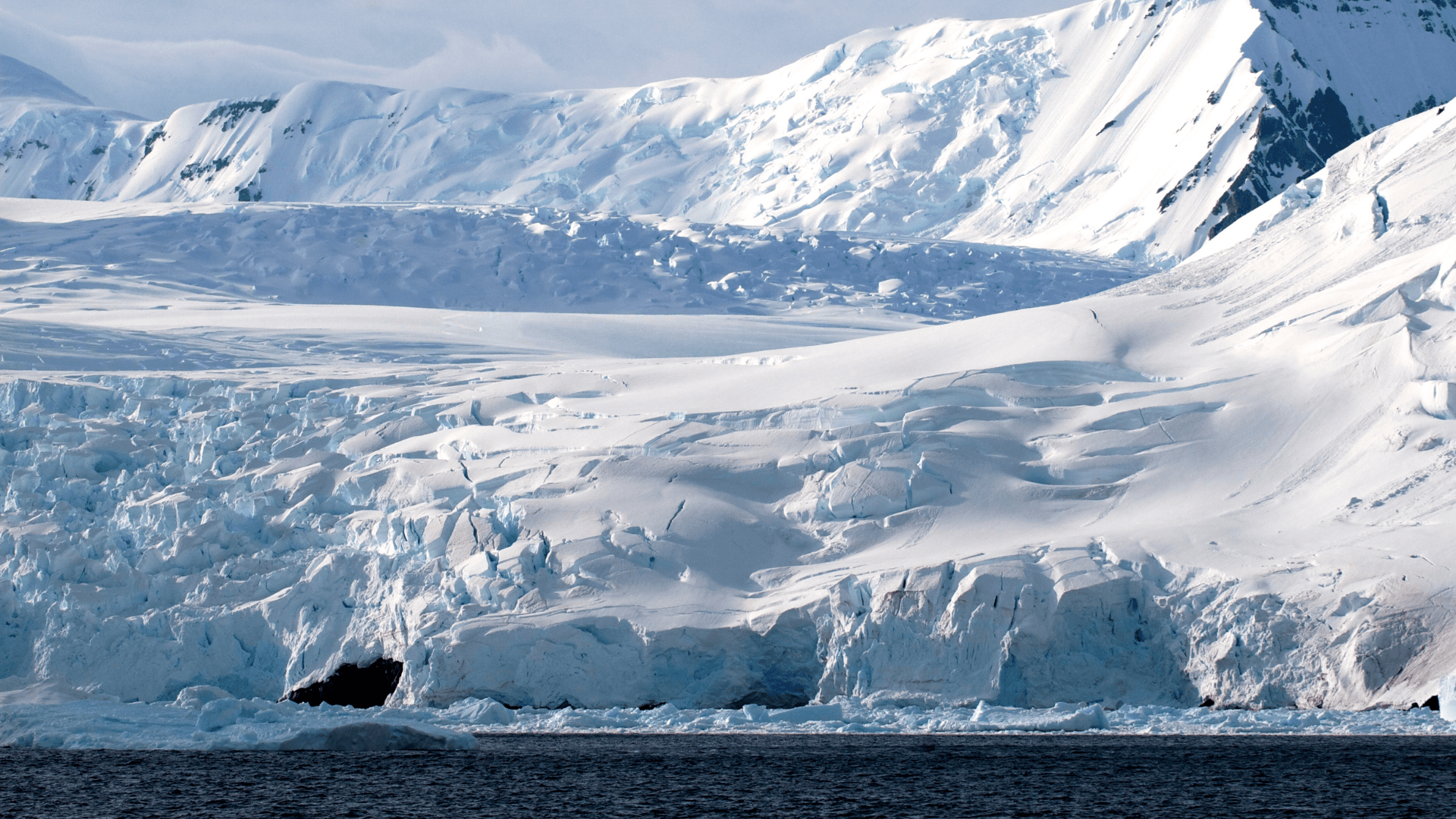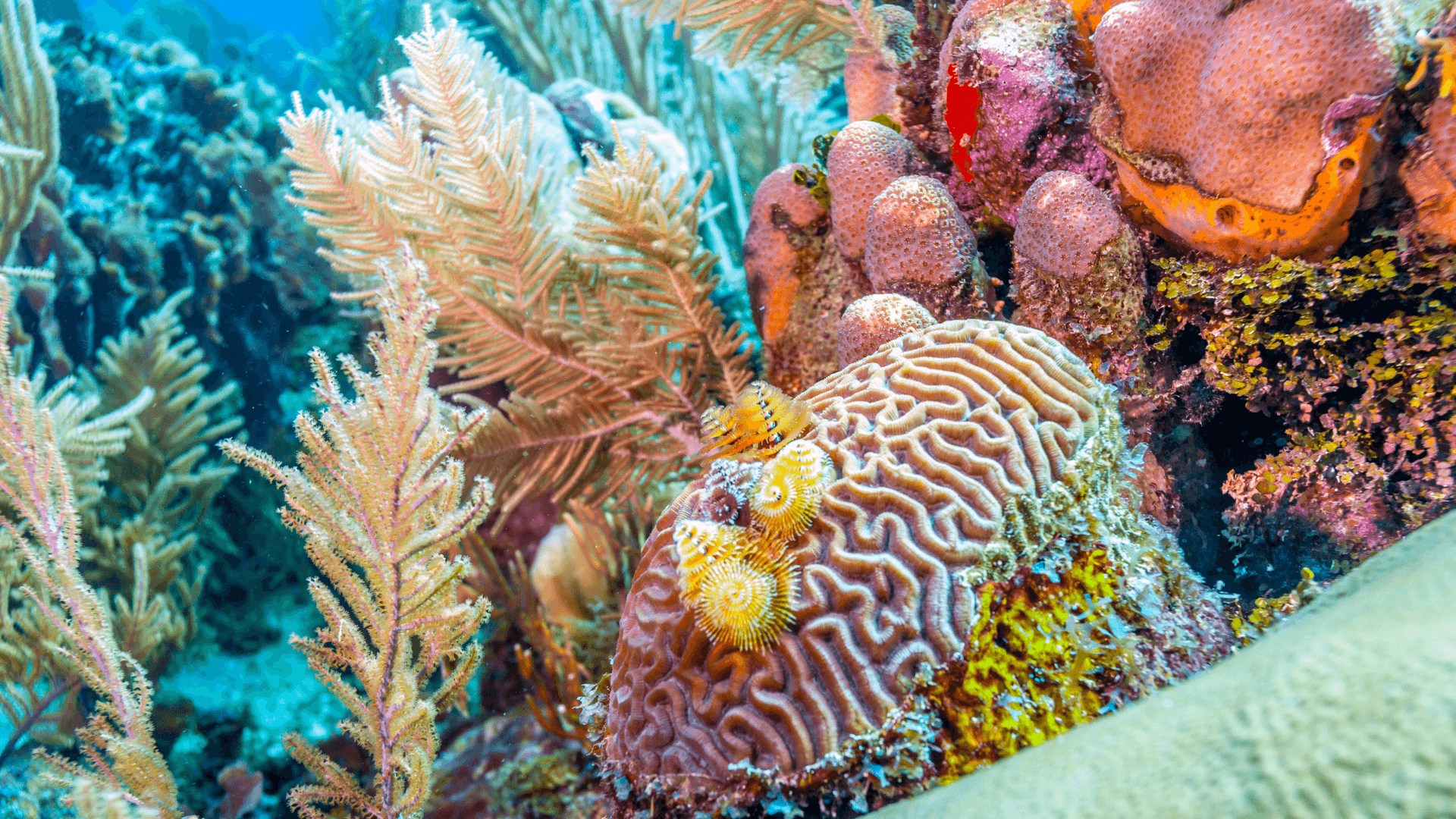Collapse of the Conger Ice Shelf: Alert for East Antarctica
Collapse of the Conger Ice Shelf: Alert for East Antarctica
Collapse of the Conger Ice Shelf: Alert for East Antarctica
Dec 20, 2024
Dec 20, 2024
Dec 20, 2024

Illustrative image. Credit: Getty Images via Canva.
Illustrative image. Credit: Getty Images via Canva.
Illustrative image. Credit: Getty Images via Canva.
In 2022, the Conger ice shelf in East Antarctica rapidly collapsed, highlighting the vulnerability of polar ice caps to climate change. Learn more about the study details and its implications.
In 2022, the Conger ice shelf in East Antarctica rapidly collapsed, highlighting the vulnerability of polar ice caps to climate change. Learn more about the study details and its implications.
In 2022, the Conger ice shelf in East Antarctica rapidly collapsed, highlighting the vulnerability of polar ice caps to climate change. Learn more about the study details and its implications.
In March 2022, the Conger ice shelf, located in East Antarctica, experienced a dramatic collapse that surprised scientists worldwide. In less than a week, this massive 1,200 km² structure fragmented into icebergs, demonstrating the increasing vulnerability of polar ice caps to climate change. A study published in the Nature Geoscience journal revealed the factors that led to the collapse and highlighted its implications for Antarctica's future.
The Rapid Collapse of the Conger Ice Shelf
The collapse of the Conger ice shelf stood out for its magnitude and rapid speed, challenging the perception of stability in East Antarctica.
The ice shelf is in one of the continent's traditionally considered most stable regions and contributes to the global climate balance. East Antarctica contains most of the planet's land ice, which is paramount for regulating sea levels and maintaining the stability of polar ecosystems.
Despite this, in just six days, Conger completely disintegrated, transforming into icebergs now floating in the Antarctic Ocean. This was one of the fastest collapses ever recorded in an area historically viewed as resilient.
Decades of Gradual Weakening and Factors Accelerating the Collapse
Although the collapse of the Conger ice shelf occurred abruptly, it was preceded by decades of structural weakening caused by ongoing processes.
Since 1994, the ice shelf's thickness has decreased from 200 meters to 130 meters, with thinning accelerated by basal melting from warmer ocean waters. Simultaneously, the emergence of cracks along the structure allowed salty water infiltration, further exacerbating its weakening. This gradual process left Conger vulnerable to external forces, creating the conditions for the final collapse.
The catastrophic outcome was intensified by specific climatic and oceanographic conditions that triggered the rupture. At the time of the collapse, an intense storm created ocean swells and strong winds, further destabilizing the weakened structure.
Simultaneously, since 2010, changes in ocean currents began bringing slightly warmer waters to the region, accelerating the ice shelf's basal melting. The combination of these factors resulted in the rapid disintegration of Conger.
Implications for East Antarctica
While the collapse of the Conger ice shelf did not immediately influence global sea levels, it serves as a concerning warning about East Antarctica's increasing vulnerability to climate change.
This region, which contains about ten times more ice than West Antarctica, is fundamental for maintaining the global sea level balance. The fall of Conger highlights that even areas considered stable are being significantly affected by climate transformations, increasing the risk of similar collapses in the future.
Nearby Conger is the Denman Glacier, an immense ice mass that can raise global sea levels by up to 1.5 meters. Should the shelf supporting Denman collapse, the consequences could be irreversible, with catastrophic implications for the planet.
Challenges for Climate Projections
The collapse of Conger also exposed limitations in current climate models, which underestimated East Antarctica's vulnerability. Previous studies predicted that this region could gain ice mass over the century due to increased precipitation.
However, the Conger event indicates that East Antarctic ice shelves are more susceptible to global warming than previously thought, necessitating urgent revisions in computational models. Besides, if other shelves exhibit similar behavior, East Antarctica's contribution to sea level rise will be much greater than current estimates indicate.
—
Access the whole study published in the Nature Geoscience journal and read the original report on Science News to understand better how climate change impacts Antarctica.
In March 2022, the Conger ice shelf, located in East Antarctica, experienced a dramatic collapse that surprised scientists worldwide. In less than a week, this massive 1,200 km² structure fragmented into icebergs, demonstrating the increasing vulnerability of polar ice caps to climate change. A study published in the Nature Geoscience journal revealed the factors that led to the collapse and highlighted its implications for Antarctica's future.
The Rapid Collapse of the Conger Ice Shelf
The collapse of the Conger ice shelf stood out for its magnitude and rapid speed, challenging the perception of stability in East Antarctica.
The ice shelf is in one of the continent's traditionally considered most stable regions and contributes to the global climate balance. East Antarctica contains most of the planet's land ice, which is paramount for regulating sea levels and maintaining the stability of polar ecosystems.
Despite this, in just six days, Conger completely disintegrated, transforming into icebergs now floating in the Antarctic Ocean. This was one of the fastest collapses ever recorded in an area historically viewed as resilient.
Decades of Gradual Weakening and Factors Accelerating the Collapse
Although the collapse of the Conger ice shelf occurred abruptly, it was preceded by decades of structural weakening caused by ongoing processes.
Since 1994, the ice shelf's thickness has decreased from 200 meters to 130 meters, with thinning accelerated by basal melting from warmer ocean waters. Simultaneously, the emergence of cracks along the structure allowed salty water infiltration, further exacerbating its weakening. This gradual process left Conger vulnerable to external forces, creating the conditions for the final collapse.
The catastrophic outcome was intensified by specific climatic and oceanographic conditions that triggered the rupture. At the time of the collapse, an intense storm created ocean swells and strong winds, further destabilizing the weakened structure.
Simultaneously, since 2010, changes in ocean currents began bringing slightly warmer waters to the region, accelerating the ice shelf's basal melting. The combination of these factors resulted in the rapid disintegration of Conger.
Implications for East Antarctica
While the collapse of the Conger ice shelf did not immediately influence global sea levels, it serves as a concerning warning about East Antarctica's increasing vulnerability to climate change.
This region, which contains about ten times more ice than West Antarctica, is fundamental for maintaining the global sea level balance. The fall of Conger highlights that even areas considered stable are being significantly affected by climate transformations, increasing the risk of similar collapses in the future.
Nearby Conger is the Denman Glacier, an immense ice mass that can raise global sea levels by up to 1.5 meters. Should the shelf supporting Denman collapse, the consequences could be irreversible, with catastrophic implications for the planet.
Challenges for Climate Projections
The collapse of Conger also exposed limitations in current climate models, which underestimated East Antarctica's vulnerability. Previous studies predicted that this region could gain ice mass over the century due to increased precipitation.
However, the Conger event indicates that East Antarctic ice shelves are more susceptible to global warming than previously thought, necessitating urgent revisions in computational models. Besides, if other shelves exhibit similar behavior, East Antarctica's contribution to sea level rise will be much greater than current estimates indicate.
—
Access the whole study published in the Nature Geoscience journal and read the original report on Science News to understand better how climate change impacts Antarctica.
In March 2022, the Conger ice shelf, located in East Antarctica, experienced a dramatic collapse that surprised scientists worldwide. In less than a week, this massive 1,200 km² structure fragmented into icebergs, demonstrating the increasing vulnerability of polar ice caps to climate change. A study published in the Nature Geoscience journal revealed the factors that led to the collapse and highlighted its implications for Antarctica's future.
The Rapid Collapse of the Conger Ice Shelf
The collapse of the Conger ice shelf stood out for its magnitude and rapid speed, challenging the perception of stability in East Antarctica.
The ice shelf is in one of the continent's traditionally considered most stable regions and contributes to the global climate balance. East Antarctica contains most of the planet's land ice, which is paramount for regulating sea levels and maintaining the stability of polar ecosystems.
Despite this, in just six days, Conger completely disintegrated, transforming into icebergs now floating in the Antarctic Ocean. This was one of the fastest collapses ever recorded in an area historically viewed as resilient.
Decades of Gradual Weakening and Factors Accelerating the Collapse
Although the collapse of the Conger ice shelf occurred abruptly, it was preceded by decades of structural weakening caused by ongoing processes.
Since 1994, the ice shelf's thickness has decreased from 200 meters to 130 meters, with thinning accelerated by basal melting from warmer ocean waters. Simultaneously, the emergence of cracks along the structure allowed salty water infiltration, further exacerbating its weakening. This gradual process left Conger vulnerable to external forces, creating the conditions for the final collapse.
The catastrophic outcome was intensified by specific climatic and oceanographic conditions that triggered the rupture. At the time of the collapse, an intense storm created ocean swells and strong winds, further destabilizing the weakened structure.
Simultaneously, since 2010, changes in ocean currents began bringing slightly warmer waters to the region, accelerating the ice shelf's basal melting. The combination of these factors resulted in the rapid disintegration of Conger.
Implications for East Antarctica
While the collapse of the Conger ice shelf did not immediately influence global sea levels, it serves as a concerning warning about East Antarctica's increasing vulnerability to climate change.
This region, which contains about ten times more ice than West Antarctica, is fundamental for maintaining the global sea level balance. The fall of Conger highlights that even areas considered stable are being significantly affected by climate transformations, increasing the risk of similar collapses in the future.
Nearby Conger is the Denman Glacier, an immense ice mass that can raise global sea levels by up to 1.5 meters. Should the shelf supporting Denman collapse, the consequences could be irreversible, with catastrophic implications for the planet.
Challenges for Climate Projections
The collapse of Conger also exposed limitations in current climate models, which underestimated East Antarctica's vulnerability. Previous studies predicted that this region could gain ice mass over the century due to increased precipitation.
However, the Conger event indicates that East Antarctic ice shelves are more susceptible to global warming than previously thought, necessitating urgent revisions in computational models. Besides, if other shelves exhibit similar behavior, East Antarctica's contribution to sea level rise will be much greater than current estimates indicate.
—
Access the whole study published in the Nature Geoscience journal and read the original report on Science News to understand better how climate change impacts Antarctica.
Compartilhar em:
Compartilhar em:
Ver Também
Ver Também

Estudo Revela que o Microbioma Humano é Altamente Individualizado
Sep 2, 2024

Estrutura em Forma de Rosquinha no Núcleo da Terra Revela Segredos sobre o Campo Magnético
Sep 2, 2024

Estudo Sugere que 'Hotspots' de Fósseis na África Distorcem a Visão da Evolução Humana
Sep 3, 2024

Ruído Incomum na Starliner de Boeing Intriga Astronauta da NASA
Sep 3, 2024

Relatório da Carbon Brief Aponta que 2024 Pode Ser o Ano Mais Quente da História
Sep 4, 2024

Clima Determina a Distribuição de Mamíferos, Revela Estudo da Universidade Estadual da Carolina do Norte
Sep 4, 2024

Como os Direitos Humanos Podem Salvar Recifes de Coral e Responsabilizar Governos
Oct 2, 2024

Nove Lugares Míticos Que Podem Ter Existido, Segundo Descobertas Arqueológicas
Oct 3, 2024

Estudo Revela Estabilidade Genética de Populações da África Austral por 10 Milênios
Oct 4, 2024

Análise de DNA em Múmias Chinesas de 3.600 Anos Revela Queijo Mais Antigo do Mundo
Oct 7, 2024

Estudo Demonstra Semelhanças Entre a Puberdade de Adolescentes da Idade do Gelo e Jovens Modernos
Oct 8, 2024

Estudo Indica Maior Incidência de Asma e Rinite Alérgica em Pessoas Nascidas no Outono e Inverno na Finlândia
Oct 9, 2024

Escavação na Dinamarca Revela 50 Esqueletos Viking Incrivelmente Preservados
Oct 10, 2024

Nascimentos na UE Caem para Menos de 4 Milhões pela Primeira Vez desde 1960
Oct 11, 2024

Estudo Aponta que Duplicação do Gene AMY1, Relacionado à Digestão de Amido, Precede a Agricultura
Oct 14, 2024

Revolução XRISM: Novas Descobertas sobre Buracos Negros Supermassivos
Oct 15, 2024

Colapso da Plataforma de Gelo Conger: Alerta para a Antártica Oriental
Dec 20, 2024

Estudo Relaciona Poluição do Ar ao Risco de Tromboembolismo Venoso
Dec 20, 2024

As Emoções e o Corpo Humano: Conexões Milenares nos Textos Neo-Assírios
Dec 20, 2024

Ambiente Potencialmente Habitável em Marte é Descoberto pelo Perseverance
Dec 20, 2024

Estudo Revela que o Microbioma Humano é Altamente Individualizado
Sep 2, 2024

Estrutura em Forma de Rosquinha no Núcleo da Terra Revela Segredos sobre o Campo Magnético
Sep 2, 2024

Estudo Sugere que 'Hotspots' de Fósseis na África Distorcem a Visão da Evolução Humana
Sep 3, 2024

Ruído Incomum na Starliner de Boeing Intriga Astronauta da NASA
Sep 3, 2024

Relatório da Carbon Brief Aponta que 2024 Pode Ser o Ano Mais Quente da História
Sep 4, 2024

Clima Determina a Distribuição de Mamíferos, Revela Estudo da Universidade Estadual da Carolina do Norte
Sep 4, 2024

Como os Direitos Humanos Podem Salvar Recifes de Coral e Responsabilizar Governos
Oct 2, 2024

Nove Lugares Míticos Que Podem Ter Existido, Segundo Descobertas Arqueológicas
Oct 3, 2024

Estudo Revela Estabilidade Genética de Populações da África Austral por 10 Milênios
Oct 4, 2024

Análise de DNA em Múmias Chinesas de 3.600 Anos Revela Queijo Mais Antigo do Mundo
Oct 7, 2024

Estudo Demonstra Semelhanças Entre a Puberdade de Adolescentes da Idade do Gelo e Jovens Modernos
Oct 8, 2024

Estudo Indica Maior Incidência de Asma e Rinite Alérgica em Pessoas Nascidas no Outono e Inverno na Finlândia
Oct 9, 2024

Escavação na Dinamarca Revela 50 Esqueletos Viking Incrivelmente Preservados
Oct 10, 2024

Nascimentos na UE Caem para Menos de 4 Milhões pela Primeira Vez desde 1960
Oct 11, 2024

Estudo Aponta que Duplicação do Gene AMY1, Relacionado à Digestão de Amido, Precede a Agricultura
Oct 14, 2024

Revolução XRISM: Novas Descobertas sobre Buracos Negros Supermassivos
Oct 15, 2024

Colapso da Plataforma de Gelo Conger: Alerta para a Antártica Oriental
Dec 20, 2024

Estudo Relaciona Poluição do Ar ao Risco de Tromboembolismo Venoso
Dec 20, 2024

As Emoções e o Corpo Humano: Conexões Milenares nos Textos Neo-Assírios
Dec 20, 2024

Ambiente Potencialmente Habitável em Marte é Descoberto pelo Perseverance
Dec 20, 2024